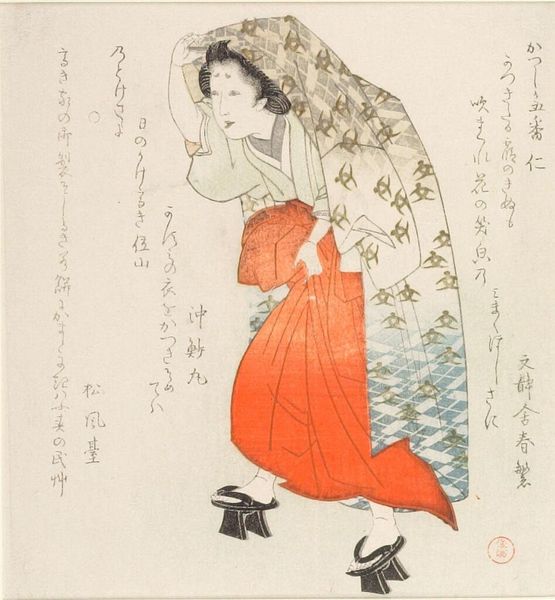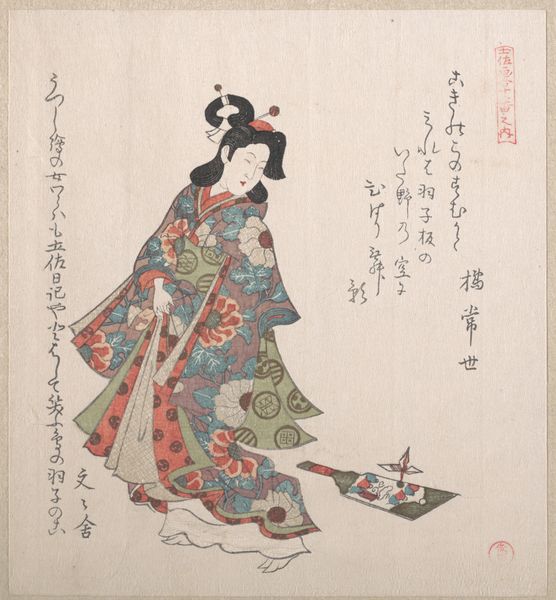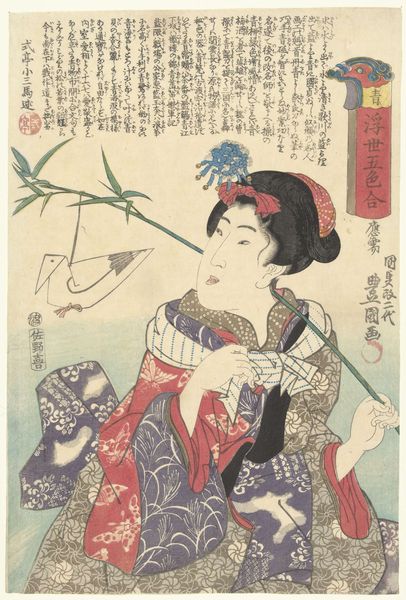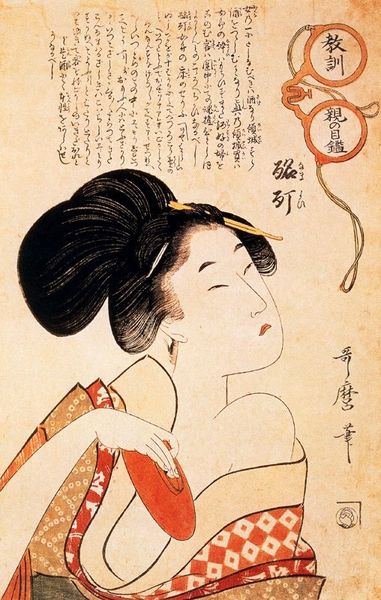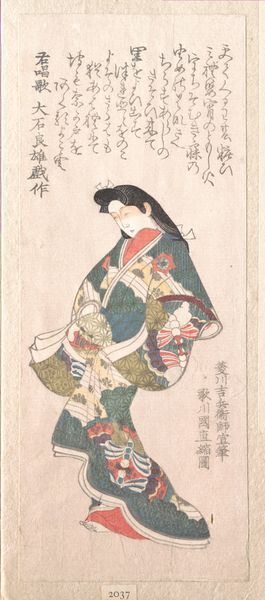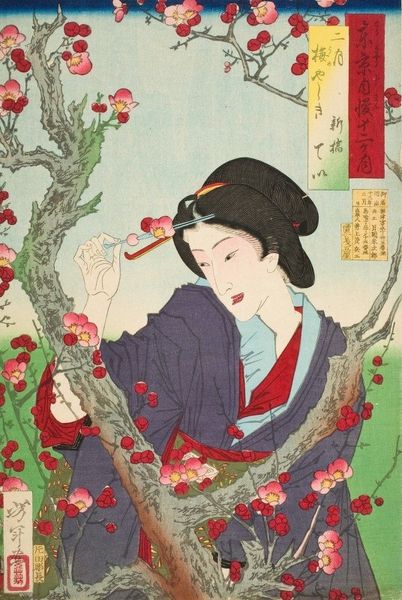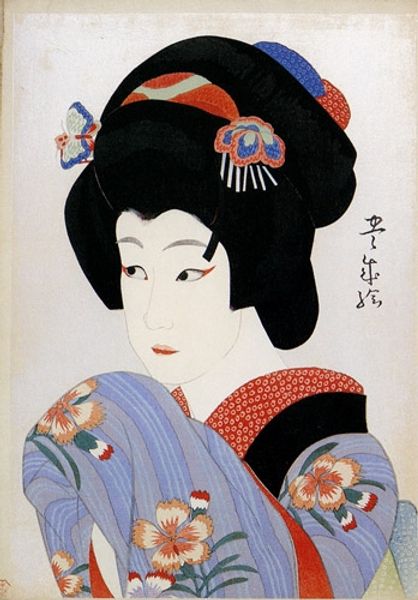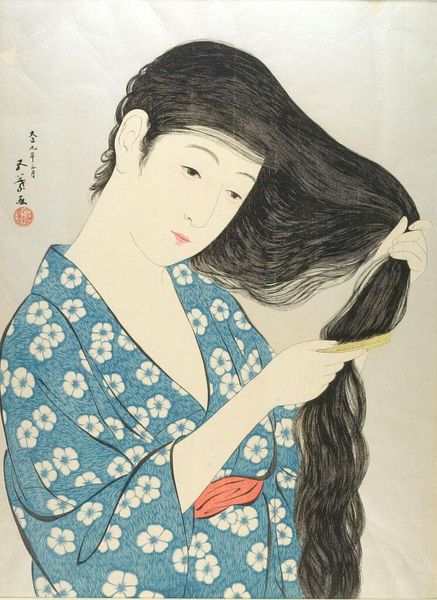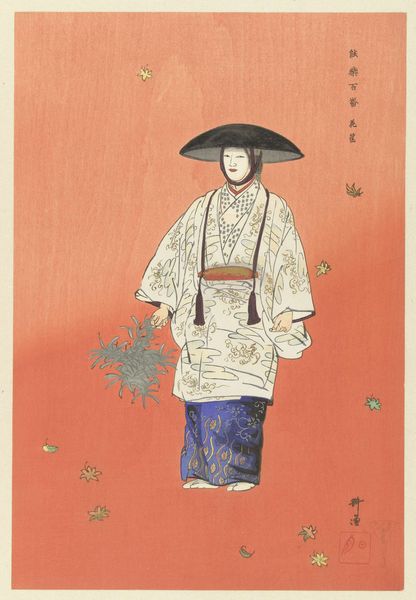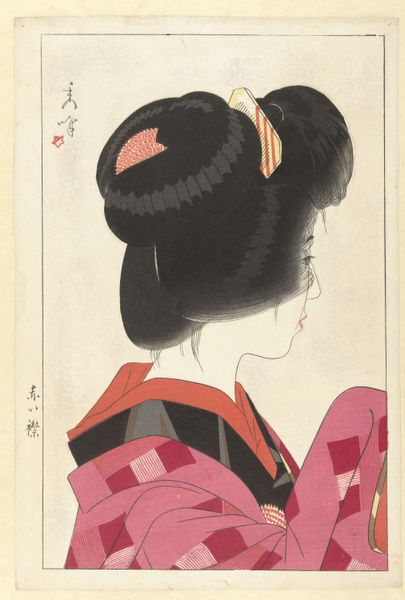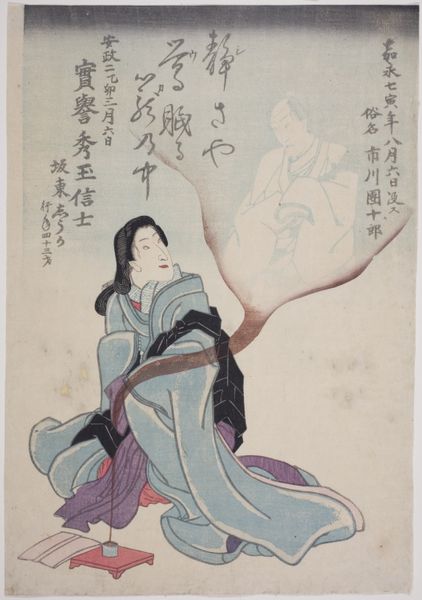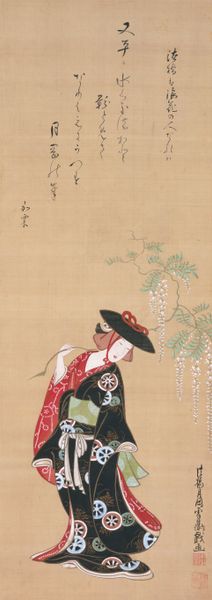
painting, paper, ink
#
portrait
#
painting
#
asian-art
#
figuration
#
paper
#
ink
#
orientalism
#
costume
#
line
#
calligraphy
Copyright: Huang Yongyu,Fair Use
Editor: So, this is Huang Yongyu's "Figure" from 1981, done with ink and color on paper. I’m immediately struck by the elegance and fluidity of the lines; it feels both classical and contemporary at the same time. What kind of context should we keep in mind while viewing this artwork? Curator: That's a great observation. It is interesting to think about this piece in terms of its public role and imagery, specifically in relation to its time. Huang Yongyu made this painting during a period of reopening and reform in China. Does it suggest anything about the artist’s position in this evolving political landscape? Editor: I'm not sure I follow... Are you suggesting it might contain a hidden critique or commentary on societal norms of the time? Curator: Precisely. Think about the subject: a beautiful woman, dressed in what appears to be traditional garb, holding flowers. The image itself alludes to historical tropes of beauty and elegance but painted in a bold style with bright colors. How do these formal qualities engage with or diverge from established representations of women in Chinese art? Consider the use of 'orientalism' too - How does it play into or challenge external perceptions of Chinese identity? Editor: So it's like he's borrowing from traditional imagery, maybe even poking fun at the expectations of 'Chinese' art through a contemporary lens? And maybe critiquing those exterior expectations in the international art world? Curator: Exactly. Yongyu uses his artistic freedom to both acknowledge and subvert those stereotypes. His distinctive take becomes a comment on cultural expectations, challenging us to consider how art can participate in broader social and political discourse. This allows us to reconsider its purpose and place in society. Does looking at the image in this way change your initial read of the image's "elegance?" Editor: It does! I see it as less about passive beauty and more about active commentary, and, it pushes back against a single understanding of cultural heritage. Thanks for making that come alive.
Comments
No comments
Be the first to comment and join the conversation on the ultimate creative platform.
